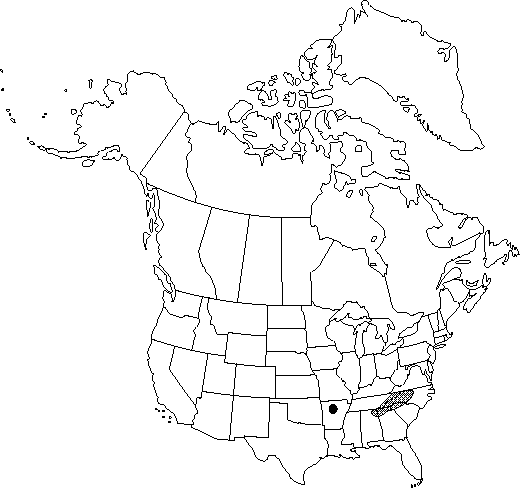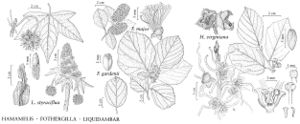Fothergilla major
Hort. Suburb. Lond., 124. 1818.
Shrubs, 7-65 dm; branches robust. Leaves: stipules 2.8-7(-10.2) mm; petioles 3-10(-18) mm. Leaf blade broadly elliptic or somewhat orbiculate to obovate, asymmetric, 2.5-13.5 × 4.2-12.5 cm, base rounded to truncate, rarely cuneate, often oblique, proximal margins entire, distal margins coarsely sinuate to repand, rarely entire, apex short-acuminate to rounded and mucronate; surfaces abaxially glaucous or green, adaxially green, both surfaces stellate-pubescent or nearly glabrous; veins (4-)5-6(-7) pairs. Inflorescences nearly sessile to short-pedunculate, 3-6 × 2-3 cm. Flowers: calyx lobes persistent in fruit; stamens (10-)22-34; filaments 6-17 mm. Fruiting spikes 3.5-7 × 1.5-2.5 cm. Capsules 5.5-13 mm. Seeds 5-6(-8) mm, apex pointed. 2n = 72.
Phenology: Flowering spring (Apr–May).
Habitat: Bluffs, dry rocky woodlands, talus slopes, riverbanks, upper piedmont to mountains
Elevation: 150-1300 m
Distribution

Ala., Ark., Ga., N.C., S.C., Tenn.
Discussion
The disjunct occurrence of Fothergilla major in Arkansas is a recent discovery.
Selected References
None.
